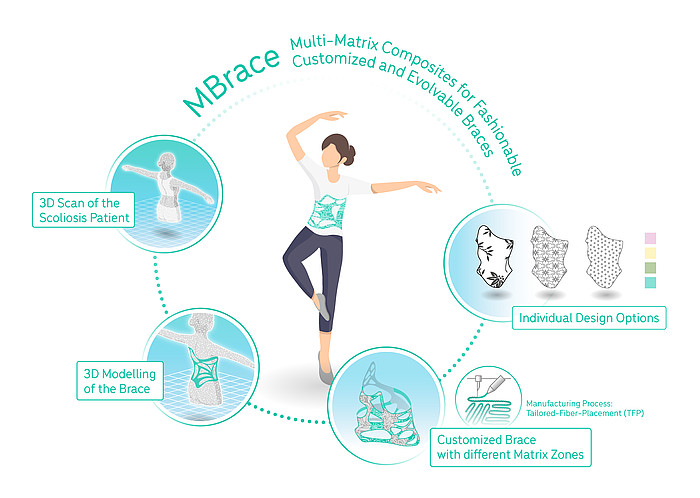Home
Project Description
Every year, 22 million Europeans are treated for scoliosis. Non-invasive treatment at child’s age is the preferred option, though mild forms of scoliosis often remain unnoticed at that time, with resulting medical conditions only arising later on in life when common braces treatment is not possible anymore. The brace confines the upper body in a rigid polyethylene shell for approx. 23 hours a day, 7 days a week, from the start of puberty until the end of growth. It is tedious and exhausting, especially in the heat of summer. And often, even the most disciplined teens and parents alike, face the challenge of choosing between continuing the suffering or suspending the treatment. Scoliosis itself is a discriminatory disease, where 4 out of 5 patients are female. Despite the restrictions, brace therapy is the most effective treatment of scoliosis, showing satisfactory results for 75 % of patients. The only existing alternative in case of a severe scoliosis is highly invasive surgery along the entire spine. Subsequently, restrictions in every aspect of daily life are accepted.
The MBrace project aims to significantly improve the well-being of these young patients. It combines innovative developments of functional multi-matrix composites, high-strength mineral fibers, cost-efficient manufacturing, new therapy methods and machine learning for gait movement with fashionable design to develop the lightest possible orthosis. The development and research of new materials and design concepts for flexible elements is intended to give the body more range of motion and significantly increase patient compliance by reducing the limitations of conventional braces. This ambitious approach envisions reducing mass, improving comfort, and creating a structured design with large openings and appealing morphology. The project's goal is to transform scoliosis braces from an uncomfortable fixation device into a supportive aid with high wearing comfort, and to change their perception from a medical necessity to a fashion accessory.

The challenges in the project arise from various areas. If fiber sizings are equally adapted to the different matrix material, they can form flowing transitions between strong and flexible composites. The interactions of fiber sizings and matrix material on the rigidity in these transition zones is still not understood and therefore is the first scope of the project. These new composites demand new computation and design methods, as no existing knowledge can be used for component development with several matrix materials. Dynamic analysis methods for the biomechanical evaluation of the brace are needed since the new functions cannot be evaluated properly with conventional analyses methods. New manufacturing methods must consider the different requirements of the matrix materials as well as the complex geometry of the new brace.
Starting after preliminary work on the individual fields of the partners at TRL 1, the objective of the project is to merge these, to develop them and to adapt for the application of the scoliosis brace at TRL 4 by the end of the project through proof of functionality on a laboratory scale. The entire development will be accompanied by studies on patients to directly understand the effectiveness of each single development step.

